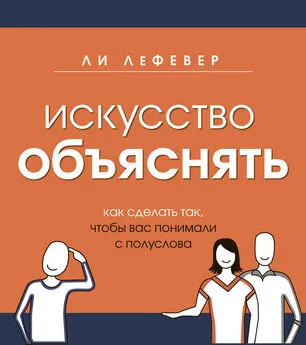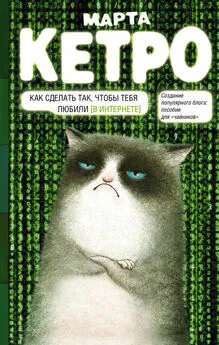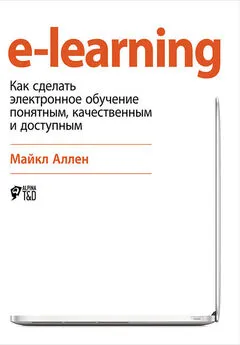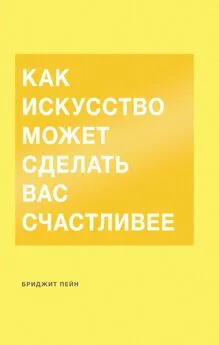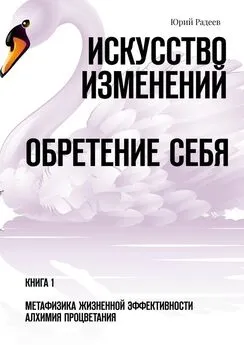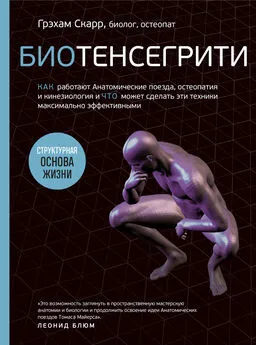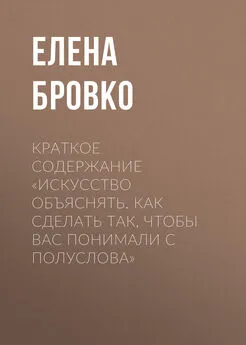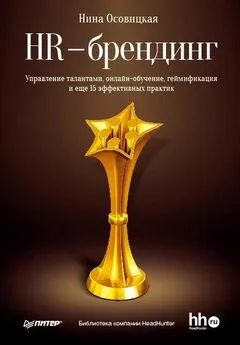Джули Дирксен - Искусство обучать. Как сделать любое обучение нескучным и эффективным
- Название:Искусство обучать. Как сделать любое обучение нескучным и эффективным
- Автор:
- Жанр:
- Издательство:Манн Иванов Фербер
- Год:2013
- Город:Москва
- ISBN:978-5-91657-792-1
- Рейтинг:
- Избранное:Добавить в избранное
-
Отзывы:
-
Ваша оценка:
Джули Дирксен - Искусство обучать. Как сделать любое обучение нескучным и эффективным краткое содержание
Эта книга поможет по-новому взглянуть на процесс обучения. В ней в доступной форме, наглядно и структурировано изложены базовые принципы педагогики и основы когнитивной психологии, узнав которые вы сможете выстроить обучение так, что оно станет максимально полезным и увлекательным для всех без исключения.
Книга будет интересна не только учителям, лекторам и HR, но и всем, кто сталкивается в повседневной жизни с презентациями, отчетами и любыми другими формами донесения информации.
На русском языке публикуется впервые.
Искусство обучать. Как сделать любое обучение нескучным и эффективным - читать онлайн бесплатно полную версию (весь текст целиком)
Интервал:
Закладка:
2. Bloom, Benjamin S. 1956. Taxonomy of Educational Objectives, Handbook I: The Cognitive Domain. New York: David McKay Co Inc. Brand, Stewart. 1994. How Buildings Learn: What Happens After They’re Built. New York: Viking.
3. Gery, Gloria. 1991. Electronic Performance Support Systems: How and Why to Remake the Workplace through the Strategic Application of Technology. Boston: Weingarten Publications.
4. Thalheimer, Will. 2006. New Taxonomy for Learning Objectives, Will At Work Learning Blog, June 1. http://www.willatworklearning.com/2006/06/new_taxonomy_fo.html.
Глава 4
1. Memory. 2011. In Encyclop ж dia Britannica. Retrieved from http://www.britannica.com/EBchecked/topic/374487/memory Feinstein, Justin S., Melissa C. Duffa, and Daniel Tranel. 2010. Sustained experience of emotion after loss of memory in patients with amnesia. PNAS 107(17): 7674–7679.
2. Heath, Chip and Dan Heath. 2007. Made to Stick: Why Some Ideas Survive and Others Die. New York: Random House. Karpicke, Jeffrey D., and Janelle R. Blunt. 2011. Retrieval Practice Produces More Learning than Elaborative Studying with Concept Mapping, Science: DOI: 10.1126/science.1199327, 772–775.
3. Kensinger, Elizabeth A. 2007. Negative Emotion Enhances Memory Accuracy – Behavioral and Neuroimaging Evidence. Current Directions in Psychological Science 16(4): 213–218. Miller, George A. 1956. The magical number seven, plus or minus two: some limits on our capacity for processing information. Psychological Review 63(2): 81–97.
4. Nielsen, Jakob. 2007. Banner Blindness: Old and New Findings. Alertbox, August 20, http://www.useit.com/alertbox/banner-blindness.html.
5. Stetson, C., M. P. Fiesta, and D. M. Eagleman. 2007. Does Time Really Slow Down during a Frightening Event? PLoS ONE 2(12): e1295.
Глава 5
1. Ariely, Dan, Emir Kamenica, and Drazen Prelec. 2008. Man’s search for meaning: The case of Legos. Journal of Economic Behavior & Organization 67: 671–677.
2. Bean, Cammy. 2011. Avoiding The Trap Of Clicky-Clicky Bling-Bling. eLearn Magazine, June. http://elearnmag.acm.org/featured.cfm?aid=1999745.
3. Berns, Gregory S., Samuel M. Mcclure, and P. Read Montague. 2001. Predictability modulates human brain response to reward. Journal of Neuroscience 21 (April).
4. Cialdini, Robert. 2005. What’s the best secret device for engaging student interest? The answer is in the title. Journal of Social and Clinical Psychology 24 (1): 22–29.
5. Deterding, Sebastian. 2011. A Quick Buck by Copy and Paste, posted by Gamification Research Network. http://gamification-research.org/2011/09/a-quick-buck-by-copy-and-paste.
6. Gailliot, M. T., R. F. Baumeister, C. N. DeWall, J. K. Maner, E. A. Plant, D. M. Tice, L. E. Brewer, and B. J. Schmeichel. 2007. Self-control relies on glucose as a limited energy source: Willpower is more than a metaphor. Journal of Personality and Social Psychology 92: 325–336.
7. Jabr, Ferris. 2010. The Psychology of Competition: Meeting Your Match. Scientific American Mind Nov/Dec: 42–45.
8. Kohn, Alfie. 1993. Punished by Rewards: The Trouble with Gold Stars, Incentive Plans, A’s, Praise, and Other Bribes. Boston: Houghton Mifflin.
9. Loewenstein, G. 1994. The Psychology of Curiosity: A Review and Reinterpretation. Psychological Bulletin 116 (1): 75–98. Found via Stephen Anderson’s excellent article in Johnny Holland.
10. Mason, Charlotte. 1923. Three Instruments of Education, Charlotte Mason’s Original Homeschooling Series 6: 94. Copyrighted 2002–2003 by Ambleside Online.
11. Minnesota Driver’s Manual. http://www.dps.state.mn.us/dvs/DLTraining/DLManual/DLManual.htm.
12. Okita, S. Y., J. Bailenson, and D. L. Schwartz. 2008. Mere Belief of Social Action Improves Complex Learning. Proceedings of the 8th International Conference for the Learning Sciences.
13. Pink, Daniel. 2009. Drive: The Surprising Truth About What Motivates Us. New York: Riverside (Penguin).
14. Schmidt, S.R. 1994. Effects of humor on sentence memory. Journal of Experimental Psychology: Learning, Memory, and Cognition 20: 953–967.
15. Shiv, B. and A. Fedorikhin. 1999. Heart and Mind in Conflict: Interplay of Affect and Cognition in Consumer Decision Making. Journal of Consumer Research 26 (December): 278–282.
16. Thalheimer, W. 2004 (November). Bells, whistles, neon, and purple prose: When interesting words, sounds, and visuals hurt learning and performance – a review of the seductive-augmentation research. http://www.work-learning.com/seductive_ augmentations.htm.
17. Treisman, Philip Uri. 1990. Academic Perestroika: Teaching, Learning, and the Faculty’s Role in Turbulent Times. From an edited transcript of his lecture of the same name, delivered March 8, 1990, at California State University, San Bernardino. http://www2.ed.gov/about/offices/list/ope/fipse/perestroika.html.
18. Vohs, Kathleen D. and R. J. Faber. 2007. Spent Resources: Self-Regulatory Resource Availability Affects Impulse Buying. Journal of Consumer Research (March 2007).
Глава 6
1. Bain, Ken. 2004. What the Best College Teachers Do. Cambridge: Harvard University Press.
2. Barrows, Howard S. 1996. Problem-based learning in medicine and beyond: A brief overview. New Directions for Teaching and Learning, Bringing Problem-Based Learning to Higher Education: Theory and Practice, No. 68. Wilkerson, Luann and Wim Gijselaers (Eds). San Francisco: Jossey-Bass.
3. Heath, Chip and Dan Heath. 2007. Made to Stick: Why Some Ideas Survive and Others Die. New York: Random House.
4. Kuperberg, Gina R, Balaji M. Lakshmanan, David N. Caplan, and Philip J. Holcomb. 2006. Making sense of discourse: An fMRI study of causal inferencing across sentences. Neuroimage 33: 343–361.
5. Moore, Cathy. 2011. Checklist for Strong Elearning. Cathy Moore: Let’s Save the World from Boring Elearning. http://www.cathy-moore.com/resources/checklist-for-strong-elearning.pdf.
6. Muller, D. A. 2008. Designing Effective Multimedia for Physics Education. PhD Thesis (School of Physics, University of Sydney).
7. Rich, Lani Diane and Alastair Stephens. 2011. Show And Tell, Storywonk Daily. http://storywonk.com/?p=210.
Глава 7
1. Allen Interactions. 2010. Custom e-learning: Allen Interactions – Law Enforcement Response to Terrorism. http://www.youtube.com/watch?v=Vt8xkOTqwjgCsikszentmihalyi, Mihaly. 1990. Flow: The Psychology of Optimal Experience. New York: Harper.
2. Deterding, Sebastian. 2011. Don’t Play Games With Me! Presentation on slideshare.net; http://www.slideshare.net/dings/dont-play-games-with-mepromises-and-pitfalls-of-gameful-design?from=ss_embed, slide 63.
3. Gee, James Paul. 2004. Learning by Design: Games as Learning Machines. Gamasutra Magazine, http://www.gamasutra.com/gdc2004/features/20040324/gee_01.shtml.
4. Haier, R. J., B. V. Siegel Jr., A. MacLachlan, E. Soderling, S. Lottenberg, and M. S. Buchsbaum. 1992 Regional glucose metabolic changes after learning a complex visuospatial/motor task: a positron emission tomographic study. Brain Research 570: 134–14.
5. Karpicke, Jeffrey D. and Janell R. Blunt. 2011. Retrieval Practice Produces More Learning than Elaborative Studying with Concept Mapping. Science, DOI:10.1126/science.1199327.
6. Thalheimer, Will. 2006. Spacing Learning Events Over Time. From Work-Learning Research, Inc., http://www.work-learning.com/catalog.
7. Zeleny, Milan. 1987, Management Support Systems: Towards Integrated Knowledge Management. Human Systems Management 7(1): 59–70.
Глава 8
1. Bandura, Albert. 1977. Self-efficacy: Toward a unifying theory of behavioral change. Psychological Review 84: 191–215.
2. Dance, Gabriel, Tom Jackson, and Aron Pilhofer. 2009. Gauging Your Distraction. New York Times. www.nytimes.com/interactive/2009/07/19/technology/20090719-driving-game.html.
3. Davis, F. D. 1989. Perceived usefulness, perceived ease of use, and user acceptance of information technology. MIS Quarterly 13(3): 319–340. Dweck, Carol S. 2007. The Perils and Promises of Praise. Educational Leadership 65 (2): 34–39.
4. Fogg, B. J. 2011, 2010. Behavior Model ( www.behaviormodel.org) and Behavior Grid ( www.behaviorgrid.org).
5. Mueller, Claudia M. and Carol S. Dweck. 1998. Intelligence praise can undermine motivation and performance. Journal of Personality and Social Psychology 75: 33–52.
6. PSA Texting and Driving, U.K. 2009. www.youtube.com/watch?v=8I54mlK0kVw. Described at www.gwent.police.uk/leadnews.php?a=2172.
7. Rogers, Everett M. 1962. Diffusion of Innovations. Glencoe: Free Press. Most recently revised 2003 (5th edition).
Глава 9
1. Ferguson, David. 2009. Job aids: training wheels and guard rails. Dave’s Whiteboard March 31, 2009. http://www.daveswhiteboard.com/archives/1939.
2. Gollwitzer, P. M. 2006. Successful goal pursuit. In Psychological science around the world 1: 143–159, Q. Jing, H. Zhang, and K. Zhang, Eds. Philadelphia: Psychology Press.
3. Gollwitzer, P. M., K. Fujita, and G. Oettingen. 2004. Planning and the implementation of goals. In Handbook of self-regulation: Research, theory, and applications, R. F. Baumeister and K. D. Vohs, Eds. New York: Guilford Press.
4. Jeffery, Robert W. and Jennifer Utter. 2003. The Changing Environment and Population Obesity in the United States. Obesity Research 11, DOI: 10.1038/ oby.2003.221.
5. Johnson, H. D., D. Sholoscky, K. L. Gabello, R. V. Ragni, and N. M. Ogonosky. 2003. Gender differences in handwashing behavior associated with visual behavior prompts. Perceptual and Motor Skills 97: 805–810.
6. Norman, Donald. 1990. The Design of Everyday Things. New York: Doubleday Business. Originally published as The Psychology of Everyday Things. 1988. New York: Basic Books.
Примечания
1
Американское ток-шоу, которое вел известный стендап-комик Джей Лено. Выходило на канале NBC с 1992 по 2009 год. Прим. ред.
2
Маршрут для пеших туристов в североамериканской горной системе Аппалачи протяженностью около 3,5 тыс. км Прим. пер.
3
Элдрик Тонт «Тайгер» Вудс – американский гольфист, 14-кратный победитель турниров «Мейджор», спортсмен года по версии Laureus World Sports Awards: 2000, 2001. Прим. ред.
4
Люди, которые получают основную информацию соответственно посредством слуха, зрения, телесных ощущений, вкуса, осязания и обоняния. Прим. ред.
5
Таксономия (от греч . tаxis – расположение, строй, порядок и nоmos – закон) – теория классификации и систематизации сложноорганизованных областей действительности, имеющих обычно иерархическое строение (органический мир, объекты географии, геологии, языкознания, этнографии и т. д.). Прим. ред.
6
Интервал:
Закладка:

